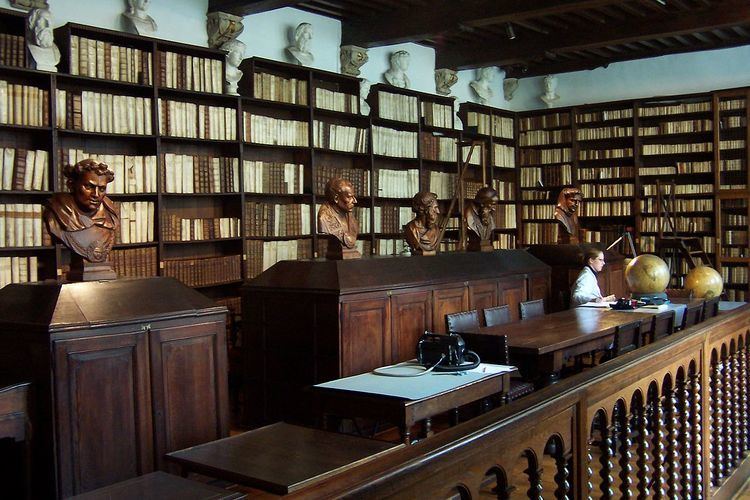Location Belgium Criteria ii, iii, iv, vi Phone +32 3 221 14 50 | Type Cultural Reference 1185 UNESCO World Heritage Site inscription 2005 | |
 | ||
UNESCO region Europe and North America Address Vrijdagmarkt 22-23, 2000 Antwerpen, Belgium Hours Open today · 10AM–5PMTuesday10AM–5PMWednesday10AM–5PMThursday10AM–5PMFriday10AM–5PMSaturday10AM–5PMSunday10AM–5PMMondayClosedSuggest an edit Similar Rubenshuis, Red Star Line Museum, Cathedral of Our Lady, Museum aan de Stroom, Antwerp City Hall Profiles | ||
The Plantin-Moretus Museum (Dutch: Plantin-Moretusmuseum) is a printing museum in Antwerp, Belgium which focuses on the work of the 16th century printers Christophe Plantin and Jan Moretus. It is located in their former residence and printing establishment, the Plantin Press, at the Vrijdagmarkt (Friday Market) in Antwerp and has been a UNESCO World Heritage Site since 2005.
Contents
History
The printing company was founded in the 16th century by Christophe Plantin, who obtained type from the leading typefounders of the day in Paris. Plantin was a major figure in contemporary printing with interests in humanism; his eight-volume, multi-language Plantin Polyglot Bible with Hebrew, Aramaic, Greek and Syriac texts was one of the most complex productions of the period. Plantin's is now suspected of being at least connected to members of heretical groups known as the Familists, and this may have led him to spend time in exile in his native France.
After Plantin's death it was owned by his son-in-law Jan Moretus. While most printing concerns disposed of their collections of older type in the eighteenth and nineteenth century in response to changing tastes, the Plantin-Moretus company "piously preserved the collection of its founder."
In 1876 Edward Moretus sold the company to the city of Antwerp. One year later the public could visit the living areas and the printing presses. The collection has been used extensively for research, for example by historian Harry Carter. His son Matthew would later describe his research as helping to demonstrate "that the finest collection of printing types made in typography's golden age was in perfect condition (some muddle aside) [along with] Plantin's accounts and inventories which names the cutters of his types."
In 2002 the museum was nominated as UNESCO World Heritage Site and in 2005 was inscribed onto the World Heritage list.
The Plantin-Moretus Museum possesses an exceptional collection of typographical material. Not only does it house the two oldest surviving printing presses in the world and complete sets of dies and matrices, it also has an extensive library, a richly decorated interior and the entire archives of the Plantin business, which were inscribed on UNESCO's Memory of the World Programme Register in 2001 in recognition of their historical significance.
